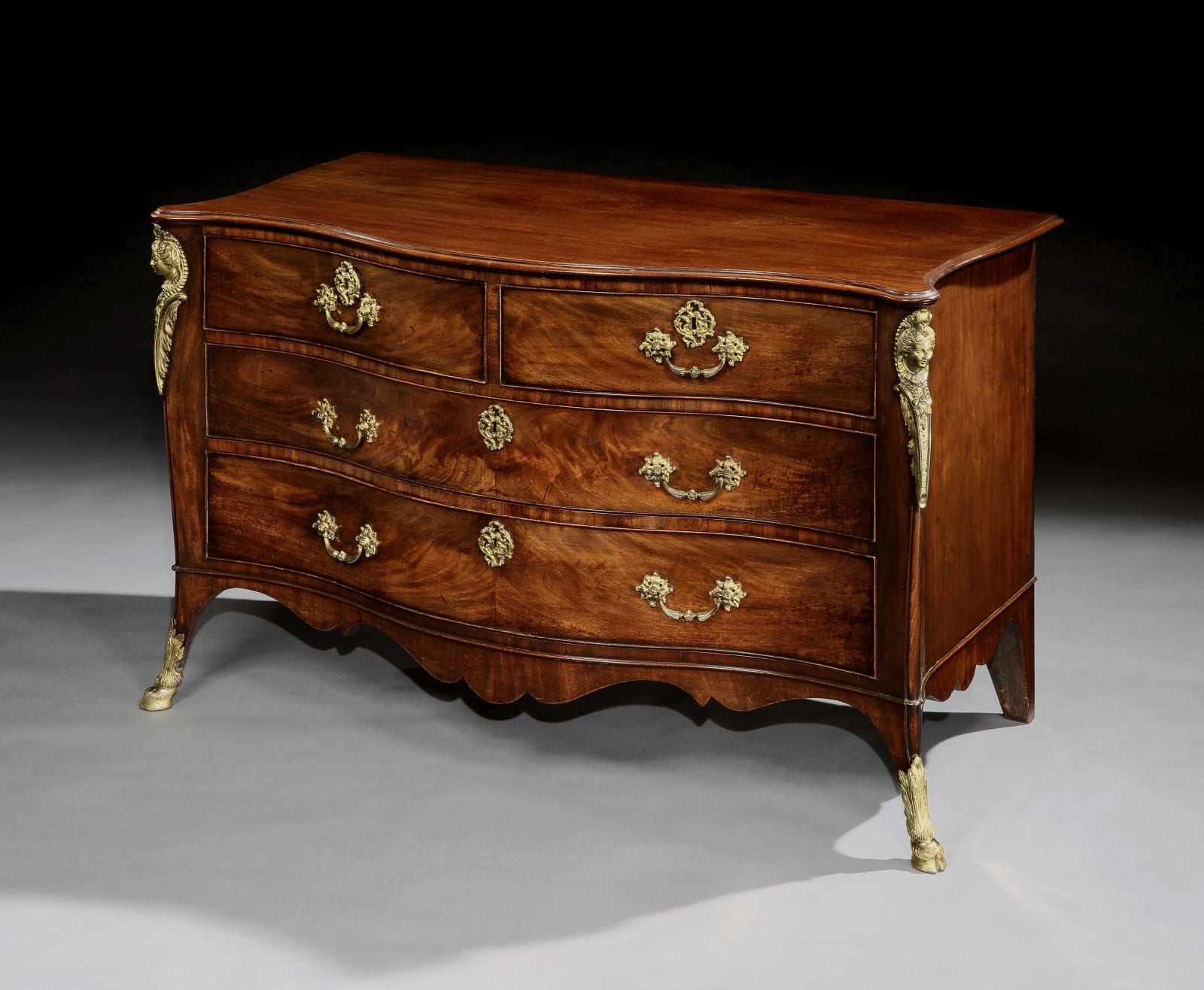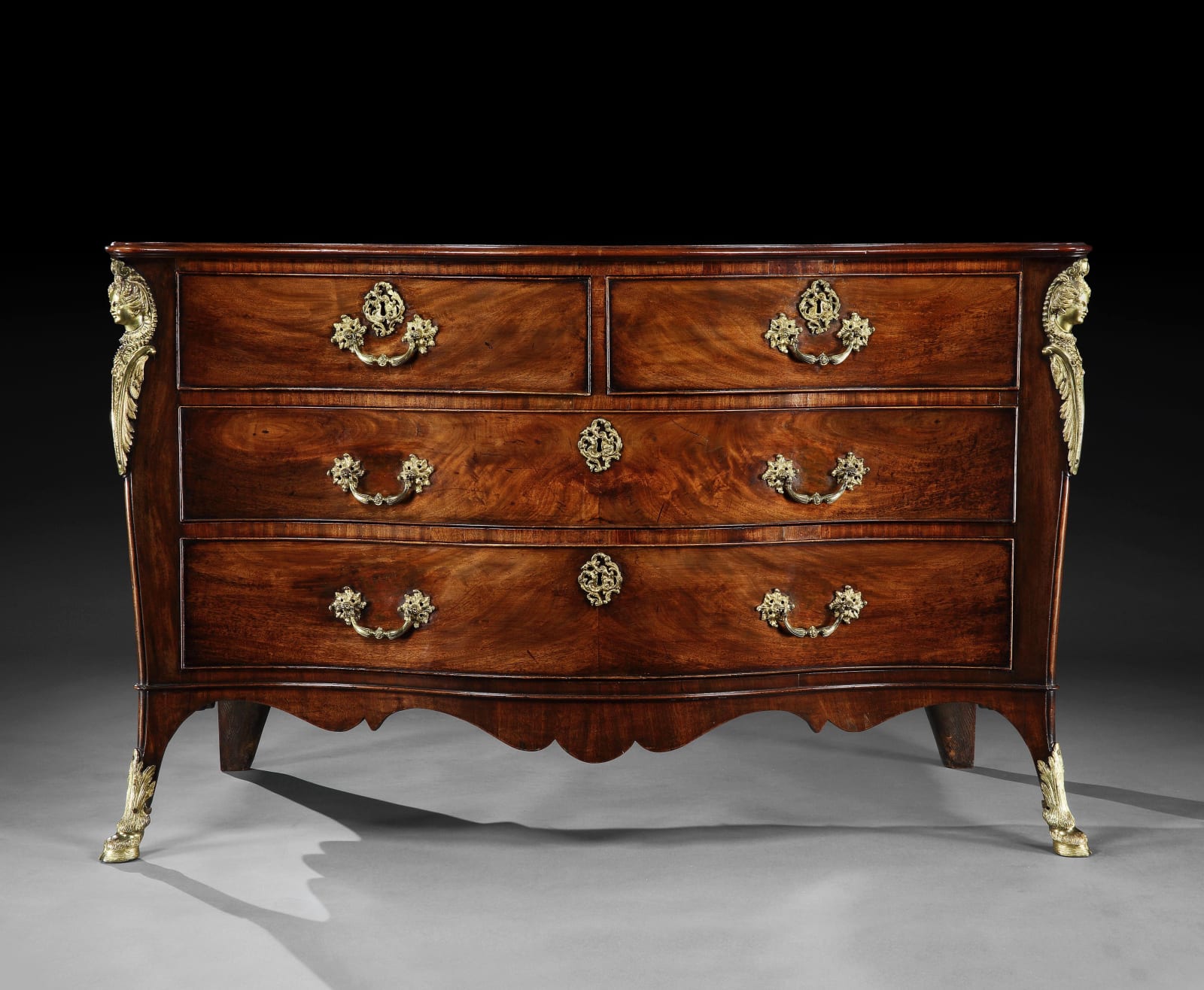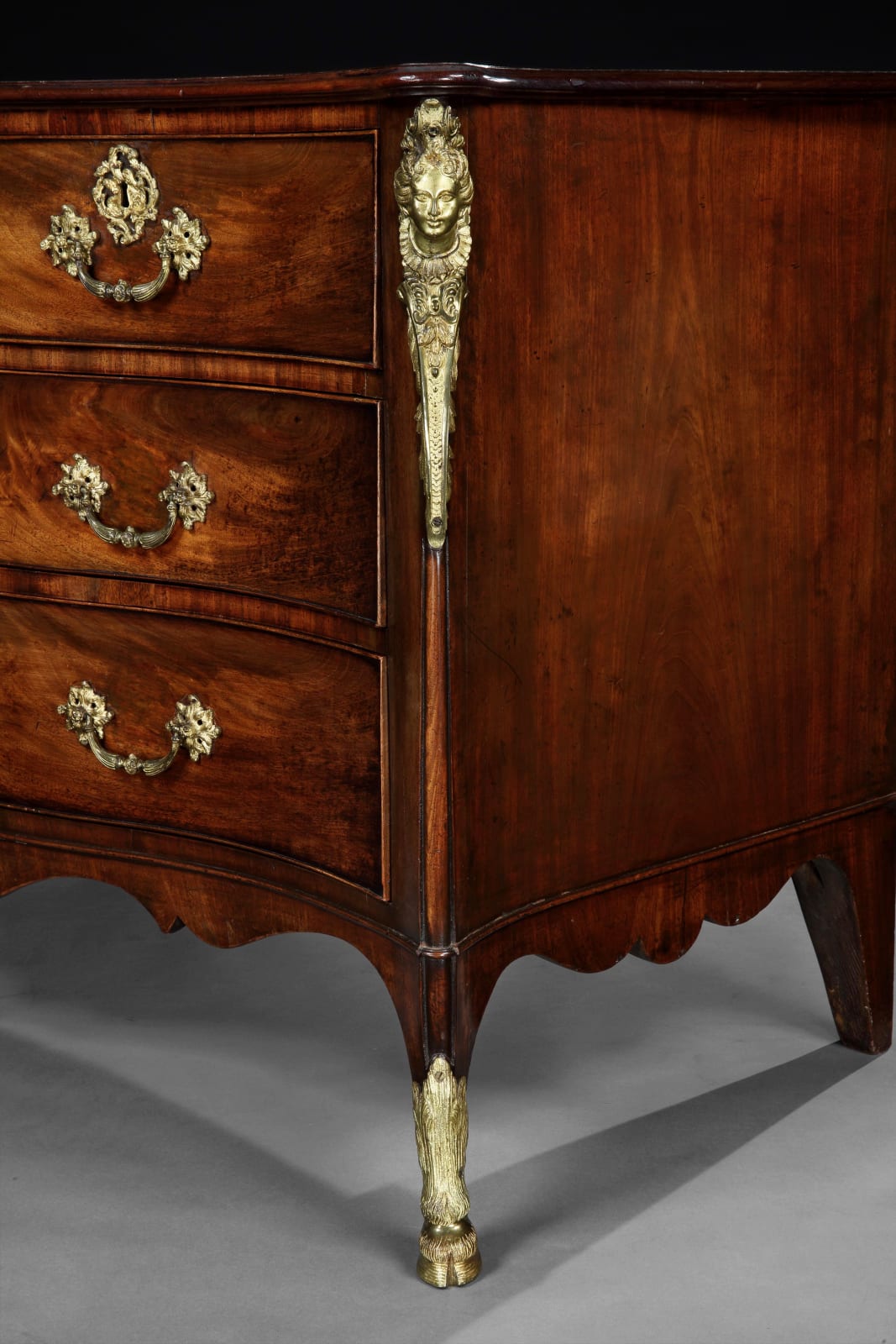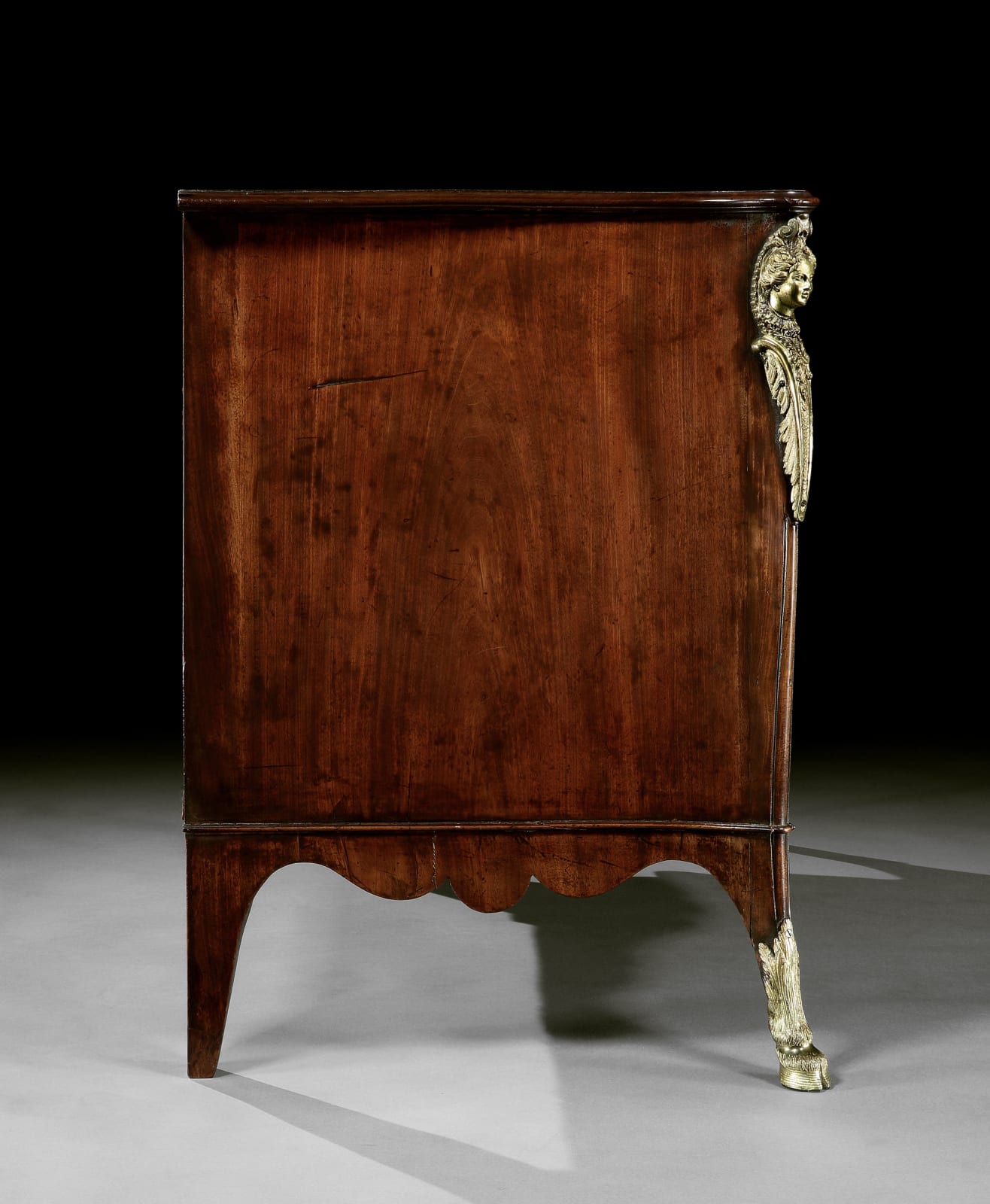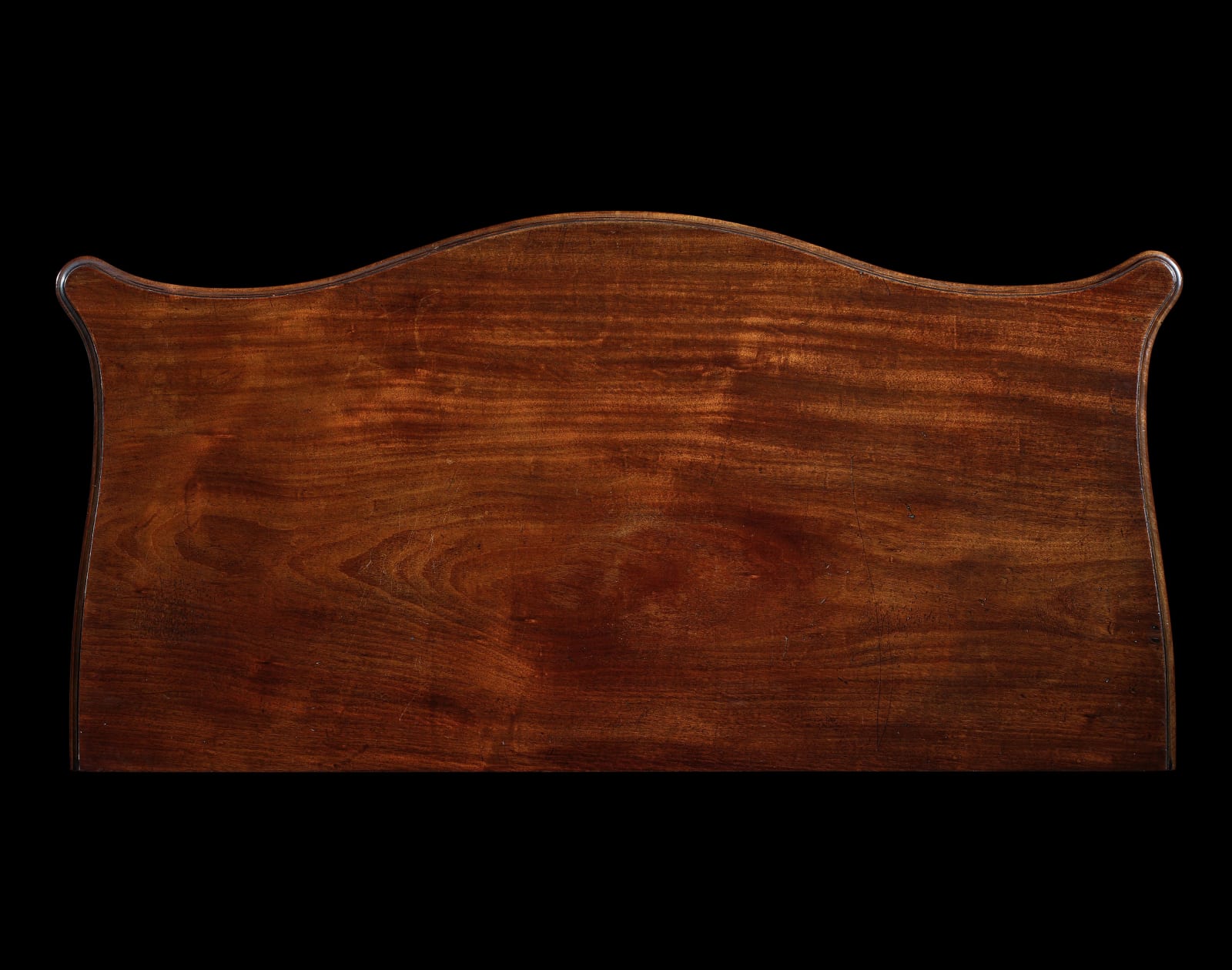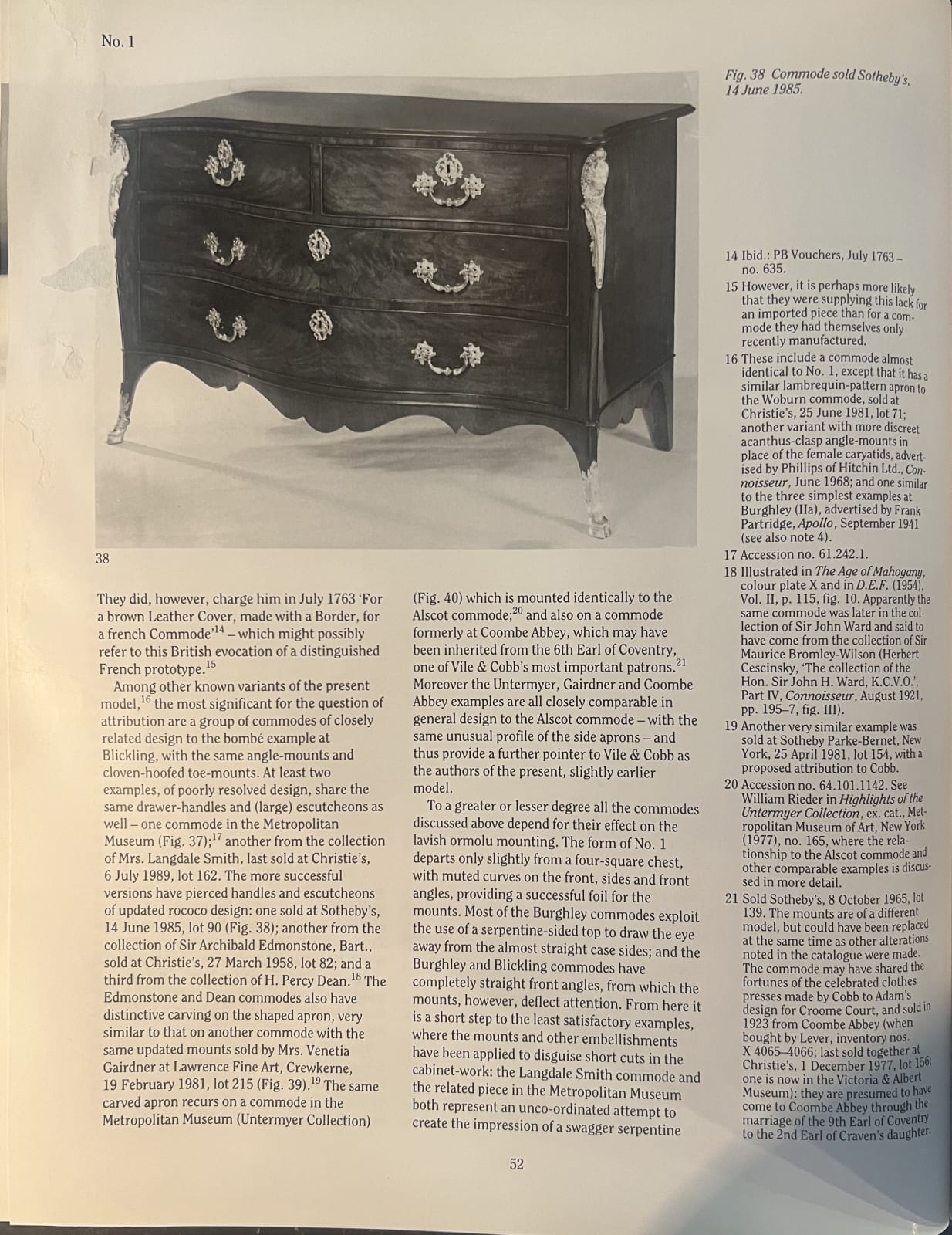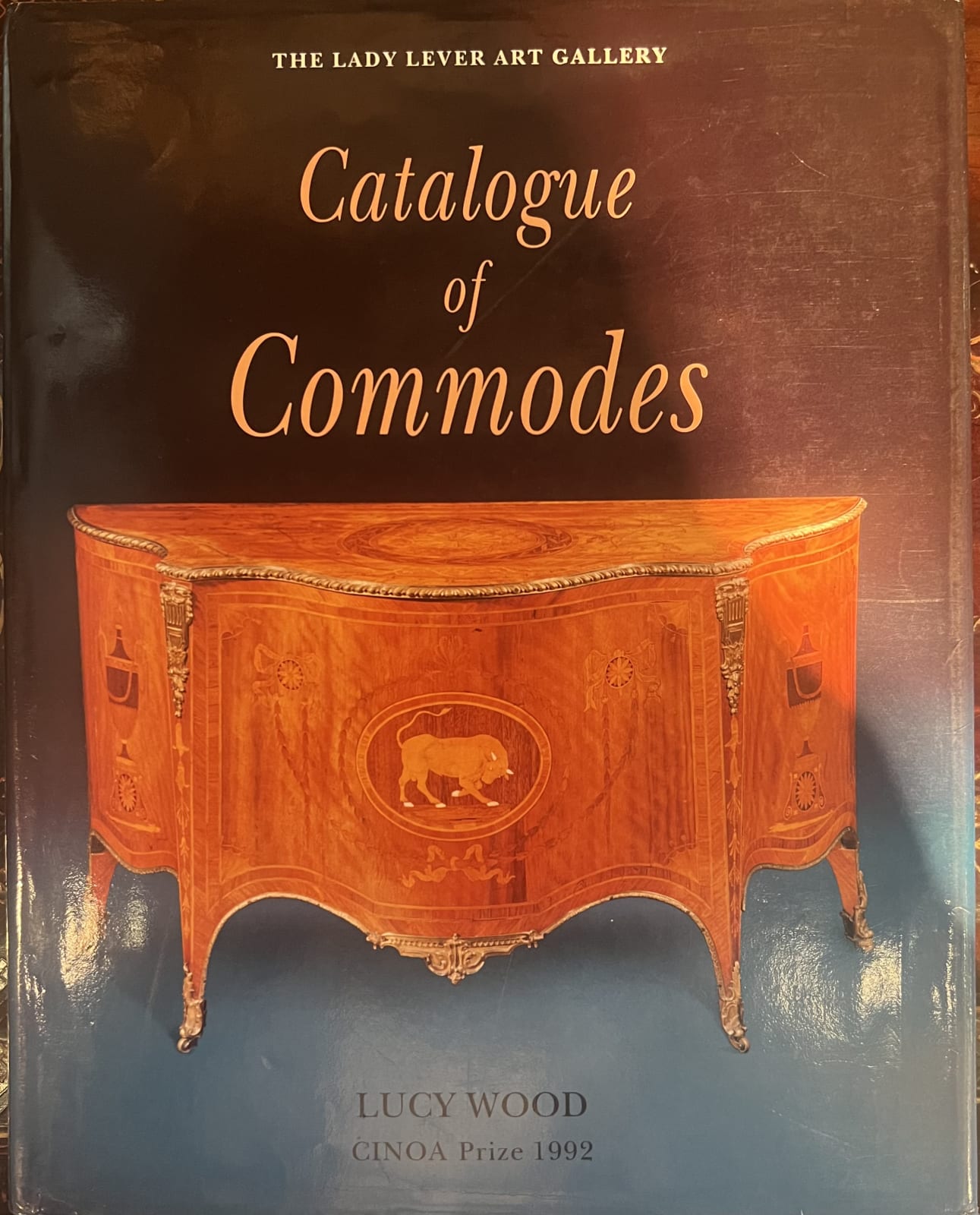Cabinets & Desks
A GEORGE III MAHOGANY COMMODE ATTRIBUTED TO JOHN COBB
Width: 55.5” / 141cm
Depth: 26.75” / 68cm
Further images
Provenance
Sold Sotheby’s, 14th June 1985, lot 90
Partridge (Fine Arts) Ltd., London, 1986
Literature
L. Wood, Catalogue of Commodes (London: 1994), pp. 43-53
G. Beard and C. Gilbert, Dictionary of English Furniture Makers, 1660-1840 (London: 1986), pp. 181-4
Publications
L. Wood, Catalogue of Commodes (London: 1994), p. 52, fig. 8
Partridge, Recent Acquisitions 1986, no. 20
A rare George III Commode Attributed to John Cobb
The present commode belongs to a closely related group attributed to the eminent cabinetmaking partnership of William Vile and John Cobb, and is illustrated in Lucy Wood’s Catalogue of Commodes (London, 1994, Section I, pp. 43–53). Wood’s authoritative text anchors this group to a documented commode supplied by Cobb to James West at Alscot Park in 1766, establishing the framework for attribution to the workshop of Vile & Cobb.
Within this group exists a distinct sub-set of commodes united by the presence of identical female mask mounts on the stiles. These masks are richly ornamented with rocaille collars, C-scrolls, acanthus leaves, gadrooning, strapwork, husks, and lapped lambrequins. In addition to the present commode, notable examples of this type survive at Burghley House, Woburn Abbey, the Lady Lever Art Gallery, and Blickling Hall (National Trust, NT 354356.1–2).
A rarer sub-group includes commodes with splayed legs terminating in cloven hoof feet, a more mature and refined Rococo stylistic feature. In most other examples of this model, the feet are square brackets mounted with carved acanthus leaves. Only seven examples with hoof feet—including the present commode—are known:
-
The Metropolitan Museum of Art, New York (Acc. No. 61.242.1)
-
Blickling Hall, Norfolk (NT 354321)
-
The H. Percy Dean Collection[^2]
-
The Sir Archibald Edmonstone Collection[^3]
-
The Mrs. Langdale Smith Collection, later sold at Christie’s New York, 16 April 2002 (USD 163,500)[^4]
-
Example sold at Neal Auction Company, New Orleans, 4 December 1999 (USD 275,000)[^5]
-
The present example
The use of hoof feet is complemented in the current piece by finely pierced Rococo handles and escutcheons—also seen on the Dean and Edmonstone examples, but not on those at Blickling or the Met. These more sophisticated mounts suggest a slightly later date within the evolution of the group, indicating a transition to a more developed French Rococo idiom.
The Blickling Hall commode, along with four others remaining in situ, was almost certainly included in a documented payment of £86 5s. 9d. from the 2nd Earl of Buckinghamshire to “Vile & Cobb cabinet-makers” in August 1762.[^6] While this payment substantiates authorship, the updated mounts and stylistic maturity of the present commode suggest a production date closer to 1764 or slightly later—possibly after William Vile’s retirement, when Cobb assumed sole leadership of the firm.
John Cobb was, by this time, at the height of his career. He and William Vile had been appointed cabinet-makers to George III in 1761, producing a series of celebrated commissions for the royal palaces. Cobb’s reputation for elegant furniture in the goût pittoresque—a fusion of French Rococo and English craftsmanship—placed him in the highest ranks of the London trade, alongside his St. Martin’s Lane neighbour Thomas Chippendale. The influence of Chippendale’s Gentleman and Cabinet-Maker’s Director is evident in the curvilinear forms and ornament of these commodes, particularly in patterns published between 1754 and 1762.
Cobb himself was a distinctive figure in the London cabinet trade. Described by J.T. Smith in Nollekens and His Times as “one of the proudest men in England,” he was known for striding through his workshops in extravagant dress, giving orders to his men while a foreman executed his wishes.[^7] This hauteur may have irked even King George III, who reportedly ranked Cobb second behind other craftsmen out of annoyance with his manner.
In 1772, Cobb was implicated in a diplomatic smuggling scandal involving the importation of furniture from France via the diplomatic pouches of Baron Berlindis (Venetian Resident) and Count Pignatelli (Neapolitan Minister), a scheme aimed at circumventing import duties.[^8] Charismatic and ambitious, Cobb also strengthened his position in the trade through marriage to Sukey Grendey, daughter of the great Giles Grendey, one of the leading cabinetmakers of the earlier Georgian period.
Commodes from this Vile & Cobb group have consistently achieved strong results at auction. In addition to the present model, an example supplied to the Duke of Bolton for Hackwood Park, with identical espagnolette mask mounts, sold at Christie’s, 8 July 1999, for £199,500. Another, made for the Earl of Ashburnham for Ashburnham Place c. 1760–61, brought USD 171,000 at Christie’s in 2000. A further example of the same model, from the Mrs. Venetia Gairdner Collection and formerly with R.A. Lee, sold Christie’s, 19 April 2001, for USD 446,000.
